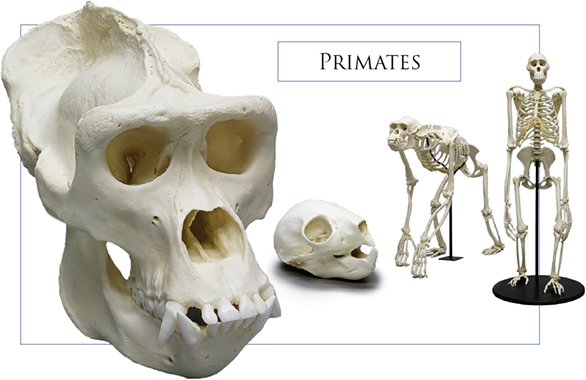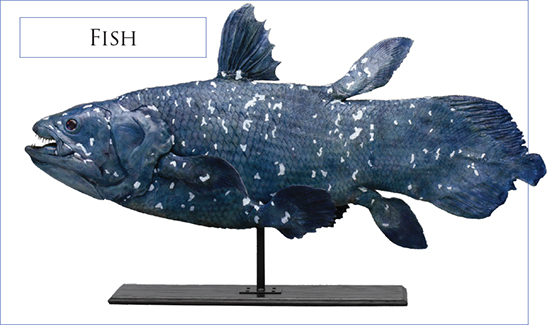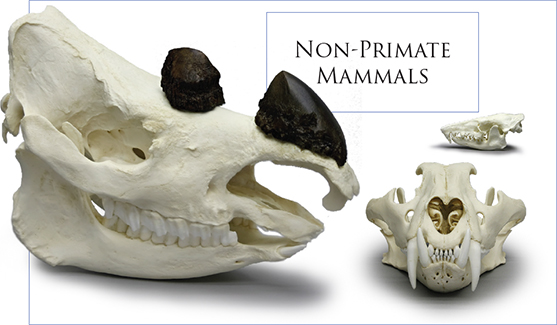
May 2018 Newsletter
Endangered Species Day: May 18
Featured Category: Endangered Species
|
May - Endangered Species Day, the third Friday in May, provides an opportunity to celebrate our planet's biodiversity and highlight efforts to conserve that diversity. There are many activities and options available for individuals and groups to become involved in conservation efforts and to spread awareness about endangered species, including a youth art contest sponsored by Endangered Species Coalition.
Our roots are deeply entwined with conservation ideals. One of our founding principles: provide excellent osteological replicas for study and display in order to eliminate the need to take wild animals for natural bone specimens. From our first skull (that of a male lowland gorilla) to our most recent, our goal is to capture as faithfully as possible each specimen's gross structure and intricate details — to create a replica "virtually indistinguishable from the original.™" In fact, before we began to imprint our logo on our products, they were sometimes mistaken for real bone by customs officials!
We hope that the availability of our products reduces pressures placed on endangered species due to poaching - and that we inspire future generations of scientists, artists, conservationists, and nature & wildlife enthusiasts.
|

|
|
|
|
|
Over 15 endangered primate species represented.
Osteological & lifecast specimens include:
Skulls
Skeletons
Cranial Elements
Postcranial Elements
|
|
|
|
|
COELACANTH
An order of fish once thought to have become extinct by the end of the Cretaceous period.
In 1938 a modern species of coelacanth was accidentally caught in a fishing net off the east coast of the southern African continent. A second species was spotted in a fish market in Indonesia, and described in 1999.
The rediscovery of living species of lobe-finned fish, one of the oldest-known lineages of bony fish from which all tetrapods are descendants, is considered one of the most significant zoological discoveries of the 20th Century. Listed by the IUCN as critically endangered, its main threats are accidental capture by fishermen seeking oilfish.
|
|

|

|
|
"For the first time since the demise of the dinosaurs 65 million years ago, we face a global mass extinction of wildlife."
Mike Barrett
Director of science and policy at WWF's UK branch.
We are experiencing an ongoing, rapid and extreme loss of biodiversity in what is being called the Sixth Extinction, the Holocene Extinction (denoting the present epoch), or the Anthropocene Extinction (in reference to the abundance of extinctions due to human activity).
From large to small, each animal plays a role in its ecosystem. Today, considerable threats to a species survival are human driven: habitat destruction, prey loss, overexploitation, poaching, climate changes and disease spread by human activity.
|
|
|
Amphibians evolved during the Devonian geologic period of the Paleozoic, and have survived several previous mass extiction events. The latter half of the 20th Century saw higher than standard extinction rates in this class of vertebrates, and now amphibian species around the world are experiencing historic levels of extinction.
|

|

|
|
The expression "The canary in the coal mine" originated with miners who took small birds with them into mines. The birds' health was a measure of safety, an early warning system. If the bird was alive, all was well.
The early 20th century saw a sharp decline in bird populations due to the widespread use of DDT. Environmental scientist Rachel Carson became alarmed, and meticulously documented the devastating effects of the chemical insecticide in her book Silent Spring (pub. 1962). Her book helped set the stage for DDT's ban, in 1972, and is widely credited for more...
|
|
Until next time...
|
All images and text © 2018 Bone Clones, Inc.
|
|